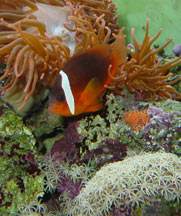
Understanding the nitrogen cycle is an important part of keeping a successful aquarium. The nitrogen cycle is responsible for the biological filtration within the system. It keeps the water free of toxic compounds that are a result of the respiration of the inhabitants, and the decay of any matter such as waste products and uneaten food.
When we understand this cycle, we can anticipate situations that may cause damage to this process, and prevent or avoid these situations that may lead to livestock loss.
 What is the nitrogen cycle?
What is the nitrogen cycle?
In the nitrogen cycle, the waste products of the fish, plants, and invertebrates, along with any dead organisms or uneaten food, are broken down by bacteria and fungi into the resulting chemical, ammonia. Ammonia is extremely toxic to all of the aquarium inhabitants. It is broken down by an oxygen-loving bacteria, Nitrosomonas. The Nitrosomonas* bacteria feed on both oxygen and ammonia, and with their biological activities, they excrete a chemical called nitrite. Although nitrite is not as toxic as ammonia, even at low concentrations in the aquarium, it can be harmful to fish and invertebrates. Another bacteria Nitrobacter*, which also utilizes oxygen in its respiration, acts in a similar way as Nitrosomonas, and essentially changes the nitrites into a relatively harmless chemical called nitrate. The bacteria that will feed on nitrates are anaerobic, meaning they grow in areas of little or no oxygen. They require low-oxygenated stagnant water, and can be found in more elaborate filtration systems and within live rock. Here they breakdown nitrates into free nitrogen.
* Note: Recent research by one of the leading companies in the aquatics industry has found that other bacteria (some of which are still unnamed) are involved in the nitrogen cycle. The company has isolated these strains of bacteria in the freshwater systems and will be marketing them in a product to be used as a cycling aid. A product containing the saltwater strains is still in development, but is expected to be available in the near future. In this article, we have used the names of the bacteria commonly referred to in current textbooks and journals, understanding these names may be added to or changed as we learn more. For home aquarists, the names of the specific bacteria are not as important as understanding the process and what may affect its efficiency.
[ Part 1 |
Part 2 |
Part 3 |
Part 4 ] |